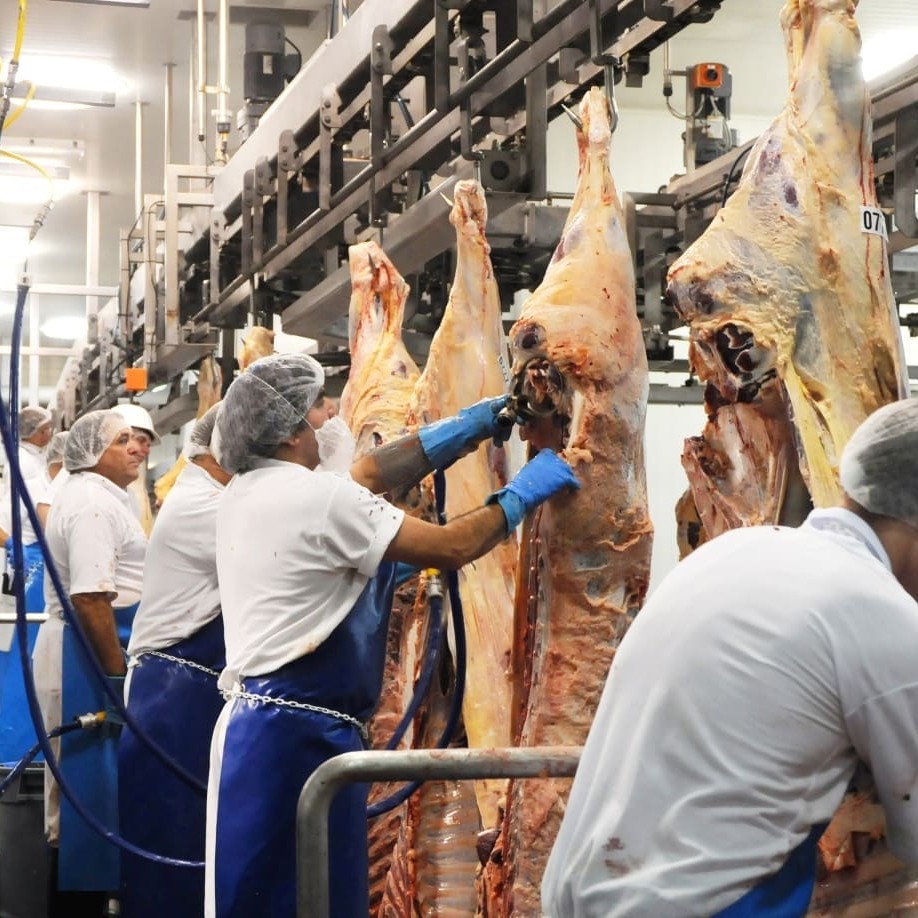 Significant meat inspection changes lie ahead for EU-eligible Australian export processors who have moved over the past few years to the Australian Export Meat Inspection System in-house inspection model.
Significant meat inspection changes lie ahead for EU-eligible Australian export processors who have moved over the past few years to the Australian Export Meat Inspection System in-house inspection model.
The development comes as a result of EU authorities declaring that Australia’s AEMIS inspection model is ineligible for supply into the EU, under current EU legislative requirements.
The move will add additional cost, as well as creating considerable disruptions for those export processors likely to be affected.
The overwhelming majority of EU-eligible beef from Australia currently goes through an AEMIS meat inspection process. To learn more about the Australian Export Meat Inspection System, click here to view an earlier Beef Central item.
Industry records show that JBS Australia, Teys Australia and Nippon Meat Packers Australia collectively hold the lion’s share of Australia’s EU quota allocation. All three are reliant on the AEMIS company-employed inspection model.
A small number of EU-eligible plants continue to use a Federal government-supplied meat inspection model, which will not be affected by the EU directive.
As background to the recent changes, an audit was conducted in late 2012 by the EU’s Food and Veterinary Office of Australian meat inspection systems. For those companies operating under AEMIS, post-mortem inspection is carried out by government-authorised officials who are employed directly by the meat company.
The EU audit report said that while it saw no significant issues with the operations, effectiveness or integrity of the AEMIS system, it did not comply with current EU regulation, which in essence says that official inspections cannot be done by personnel directly employed by the company. This applies not only to red meat, but to a wide range of inspected food items destined for the EU market.
It needs to be stressed that the EU’s decision in no way reflects badly on the performance of AEMIS, but simply that in-house inspection does not meet current EU legislation requirements.
Effectively, the EU audit report said, “Yes, Australia, we acknowledge that your AEMIS inspection model works, but it’s not in line with EU legislation.”
The audit outcome came as a major surprise to large Australian processors who have transitioned to the AEMIS model, because they were given a clear impression earlier by DAFF that AEMIS inspection would meet the EU’s requirements.
A senior Australian processing identity said it was clear that longer-term, the EU appeared likely to move to a similar inspection model as Australia’s AEMIS, but for the time being, EU legislation did not allow it.
So what does it mean for Australia’s EU-eligible export processors?
They now have a period of time – certainly no later than the end of this calendar year, and possibly as soon as October – where those companies currently using AEMIS company-employed inspectors will have to move to an arrangement where they do not directly employ or pay meat inspectors inspecting bodies destined for the EU market.
Effectively, it means that those companies wishing to supply the EU have two choices: either they can revert to Government-controlled post-mortem inspection, or adopt an appropriately-accredited third-party independent inspection service for EU cattle.
Given the developments since the EU audit decision was reached, a number of specialist Australian service delivery companies are now developing contract meat inspection services, accredited by the Federal Government under ISO international standards, that will qualify under the EU’s requirements. Look out for advertising of those services on Beef Central in coming weeks.
It’s important to point out that for cattle destined for markets other than the EU, current AEMIS inspection arrangements can, and will continue to apply.
For some processor companies, that means they may have two inspection teams: a third-party independent team for the plant’s EU kill, and current company-employed AEMIS inspectors for all other markets.
Adding to the complexity, however, many EU-eligible plants to do not kill EU cattle on a daily basis, but within defined ‘runs’ perhaps once or twice in each week’s kill roster.
The process described above could be a ‘nightmare’ to administrate, one processor contact told Beef Central yesterday. Duplication like this would inevitably add to costs, and provide a greater level of inefficiency in the inspection process.
One large multi-site export processor indicated that his company would move its entire inspection process, for all markets, from full-time company employees operating under AEMIS to contract third party inspection. Inspection staff would be offered the opportunity to transfer across from the company’s books to the third-party service provider.
One export processor company plans to start moving to this new inspection model from April 1.
Given the size of the Australian sheepmeat quota into the EU, relative to beef, the development is likely to have even greater impact on export sheepmeat processors, many of whom have moved to AEMIS. Sheepmeat export competitors like New Zealand are not likely to be affected, however, because NZ relies on a somewhat different inspection model.

WHAT IS THE MINIMUM AND MAXIMUM REQUIREMENTS FOR CHLORINE LEVELS IN CLEANING CARCASES WATER AND PRESSURE.
WE ARE CURRENTLY KILLING/SLAUGHTERING 400 CATTLE PER DAY IN BOTSWANA AND ARE SELLING TO WORLD MARKET.
Hi Berry. I’d suggest different meat importing countries will have different tolerances for Cl (chlorine). It’s best to confirm these on a customer country-by-country basis. Jon Condon, Editor